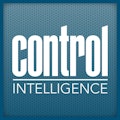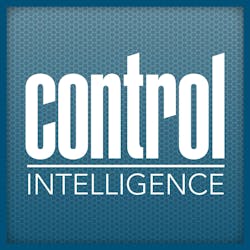Why you should choose remote-monitoring technology
In this episode of Control Intelligence, written by contributing editor Shawn Cox, editor-in-chief Mike Bacidore discusses the benefits of remote-monitoring technology.
Transcript
Monitoring electrical controls remotely enables the real-time oversight, analysis and resolution of control-system issues from a distance. This ensures not only efficiency and safety, but also facilitates proactive maintenance. The significance of having efficient and safe electrical control systems cannot be overstated, as they play a pivotal role in maintaining seamless operations, averting downtime, reducing risks and optimizing productivity across diverse industries and applications.
Remote monitoring is a technological advancement that empowers users to oversee and control devices, systems or processes from afar. This technology furnishes real-time data, alerts and control functionalities, thereby amplifying efficiency, bolstering security and facilitating proactive decision-making. In the context of electrical controls, remote monitoring entails linking sensors and devices to a central monitoring system.
This setup enables the instantaneous gathering, analysis and control of data, offering the capability for remote troubleshooting, predictive maintenance and effective energy management. The essential elements and technologies integral to remote monitoring for electrical controls encompass sensors, data acquisition systems, communication protocols, cloud platforms, analytics software and interfaces for remote access in monitoring and control operations.
Boosting efficiency and productivity involves streamlining processes, optimizing resource allocation, automating tasks and harnessing advanced technologies to enhance overall operations and output. By implementing real-time monitoring and data analysis, factories and plants can gain timely insights that empower them to make well-informed decisions, recognize patterns, identify anomalies and optimize performance for improved operational efficiency and strategic decision-making.
The ability to conduct remote troubleshooting and maintenance allows businesses to address technical issues and perform necessary updates or repairs without the need for on-site visits. This not only saves time and reduces costs, but also ensures uninterrupted operations, contributing to enhanced productivity.
Detecting potential issues early on empowers manufacturing facilities to proactively address and resolve problems before they escalate, minimizing downtime, reducing costs and maintaining smooth operations for optimal performance and customer satisfaction.
Responding immediately to critical events is essential for factories and plants to minimize the impact of emergencies or disruptions. Taking prompt action ensures the safety of employees, safeguards assets and facilitates the swift restoration of operations, thereby ensuring continuity and maintaining customer trust.
In the realm of industrial automation and manufacturing, the application of remote monitoring is transformative. This involves the remote control and adjustment of equipment, fostering efficient operations and allowing for swift adaptations as needed. Simultaneously, remote monitoring plays a pivotal role in overseeing power consumption and enhancing energy efficiency, contributing to sustainable practices within the manufacturing landscape.
In the energy sector, remote monitoring takes center stage in the monitoring and optimization of renewable energy sources. Additionally, it plays a critical role in grid management and fault detection, ensuring the reliability and stability of energy distribution systems. It ensures an uninterrupted power supply.
To guarantee peak performance and long-term efficacy, it's critical to take into account important factors when selecting the right remote monitoring system or components. First and foremost, a smooth integration that enables you to fully utilize the monitoring capabilities without any issues depends on compatibility with your customer’s current electrical control systems. Thinking ahead to future scalability and flexibility is also a big part of the decision-making process. Choosing something that can expand and change is crucial, allowing for the accommodation of shifting requirements without causing significant disruptions.
Selecting between in-house solutions and cloud-based platforms is a common decision made when assessing remote-monitoring options. This requires a detailed analysis of features, security measures and dependability in general. Cloud-based systems are known for their manageability and accessibility, but internal solutions offer more control over data security. Finding a solution that fits an organization's particular needs and priorities requires finding the correct balance.
Remote monitoring for electrical controls brings about a multitude of advantages. It lets you keep tabs on equipment performance in real time, enabling proactive maintenance and cutting down on downtime. With remote access to control systems, troubleshooting and adjustments can be made from virtually anywhere, making operations more flexible. Moreover, it boosts safety by reducing the need for physical presence in potentially hazardous environments.
Looking ahead, the future of remote monitoring technology in electrical control systems holds great promise. Ongoing developments in the Internet of Things and cloud computing will foster seamless integration, elevating the capabilities of remote monitoring even further. This technology is set to continue transforming maintenance practices, enhancing efficiency and driving productivity within the electrical control industry.
About the Author

Control Intelligence
A Control Design Podcast
Control Intelligence is a Control Design podcast that goes deep inside the automation and technology that machine builders, system integrators and end users rely on to keep production humming efficiently. New episodes come out every Monday, and download all episodes by Apple Podcasts or Podbean.

Leaders relevant to this article:
